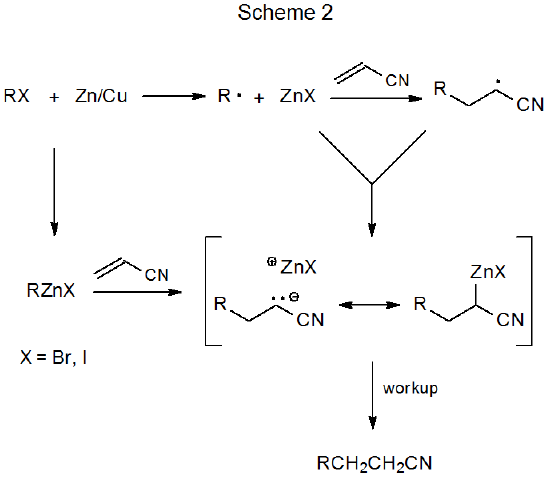IV. Reaction Mechanism
- Page ID
- 24664
Although the radical mechanism shown in Scheme 1 offers a reasonable explanation for the reactions pictured in eq 2, there is uncertainty in some reactions involving redox couples about whether a free-radical is ever produced. This uncertainty is reflected in the reaction mechanism shown in Scheme 2, which describes two possible pathways for participation of a zinc–copper couple in an addition reaction. One pathway involves radical formation by electron transfer, and the second describes formation of an organozinc intermediate. The stereochemical evidence and solvent effects described in the next two sections offer insight into the nature of the reactive species generated by a typical redox couple.


